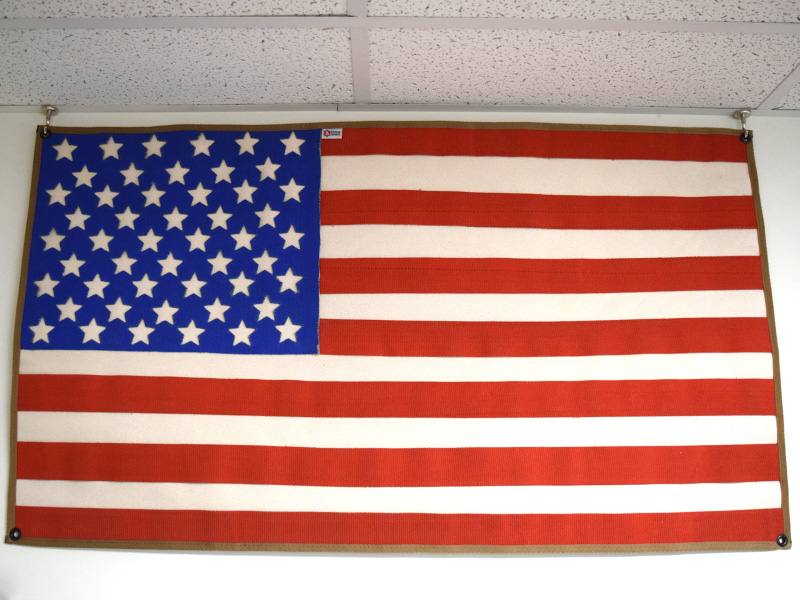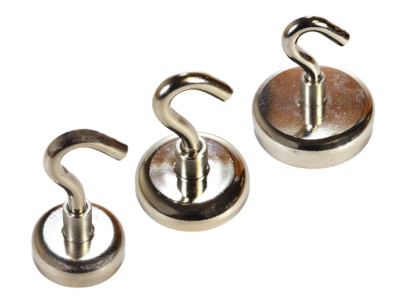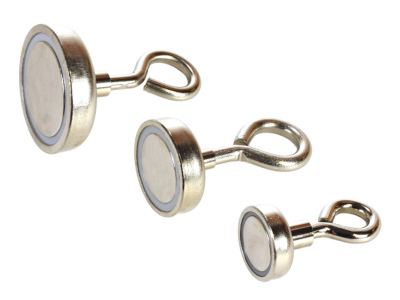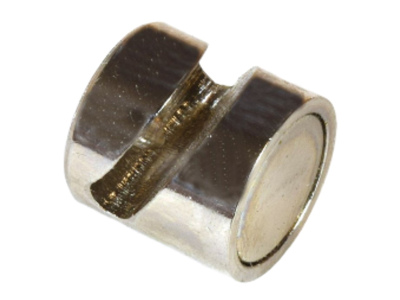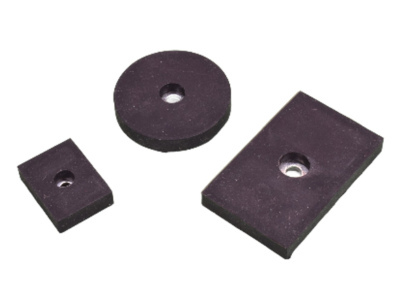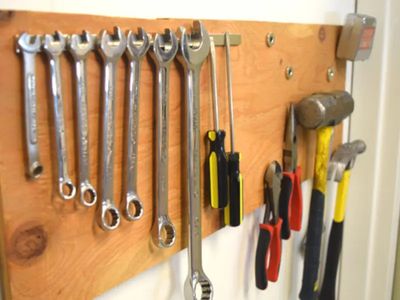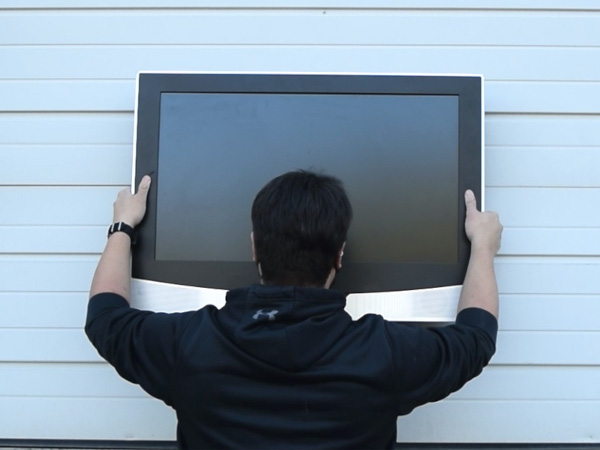Hanging with Magnetic Hooks
Hook magnets are a no hassle way of hanging on with no hardware required
1. Top ways to hang with magnetic hooks
Using hook magnets to hang holiday decor
Hook magnets are the perfect way to hang decor for any holiday! The below pictures showcase hanging a Christmas sign on a metal filing cabinet and Christmas wreath on a metal door.
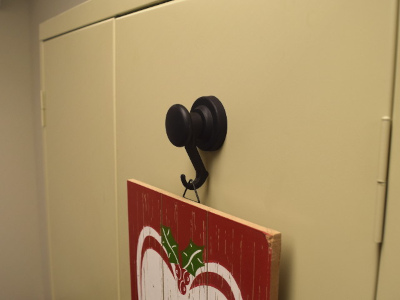
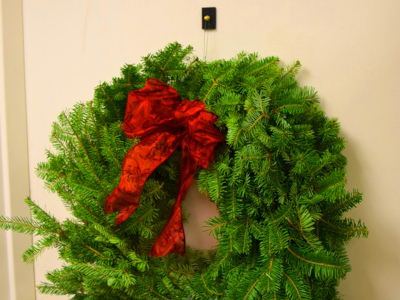
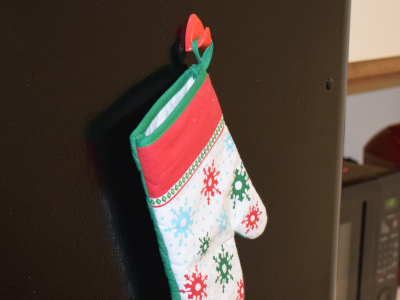
The below video highlights hanging multiple holiday decorations on different surfaces, doors, windows and more. We show off some of the magnets we tested with and which combos worked ad which did not.
Hanging on aluminum and gutters
We get the question "Are aluminum and gutters magnetic?" a lot. Aluminum and gutters are not magnetic, but you can use the magnet sandwich trick to hang on any material. Simply place a ring magnet on the inside and a hook magnet on the outside of the gutter or aluminum like we did in the below pictures. Problem solved!
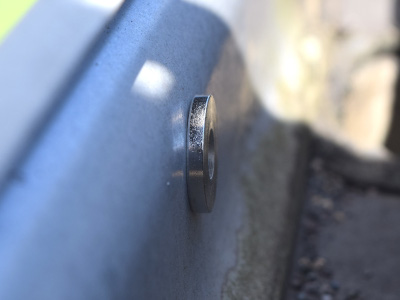
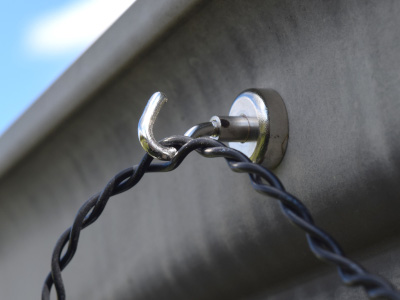
Hanging on walls, ceilings and fridges
Hook magnets are great for hanging on any metal walls or ceilings. Drop ceilings may have metal beams that the hook magnets can adhere to and any metal walls or filing cabinets are also a good place to hang things. Hanging on ceilings may be better because you will not have to deal with friction or leverage and can hang heavier objects.
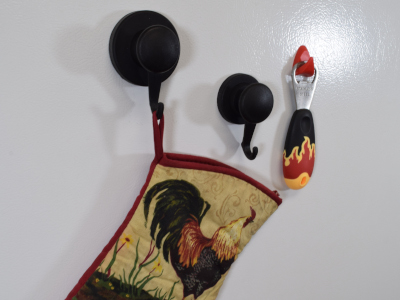

Hanging on doors and glass
Hanging with magnets on doors and glass is possible, but there are few things to be careful of. If it is a single pane of glass, just use a pair of strong rubber magnets to sandwich the glass. The rubber will give enhanced grip and help prevent slipping. On the other hand, double-pane glass and thick doors will require much larger and stronger magnets to cover the gap. While a door may be able to handle that force, a window would not. See our hook magnet testing section below for more details about our testing on windows.
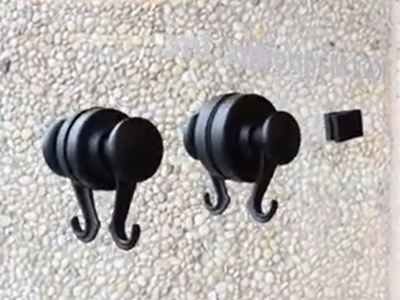
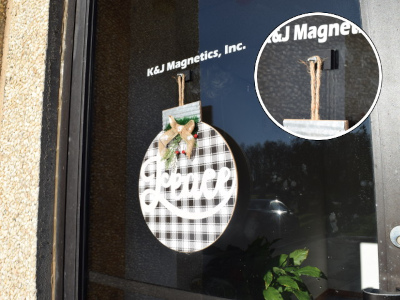
Other articles that showcase hanging with magnets
Shop All Hook Magnets
Strong neodymium hook magnets for easy hanging on doors, walls ceilings at any angle. No hardware required.
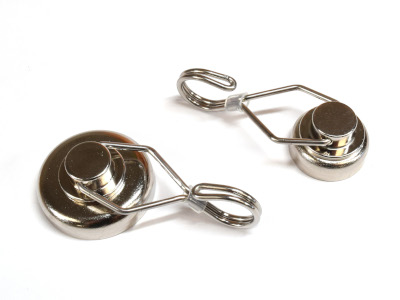
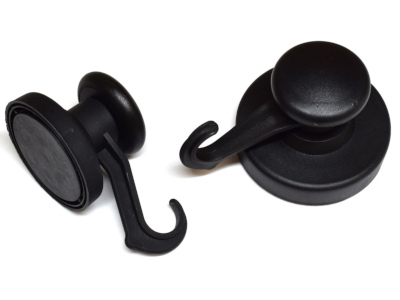
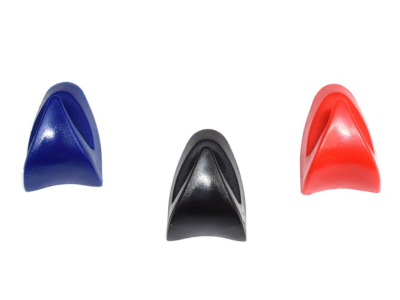
2. What are the best types of hook magnets?
The best type of hook magnets for each situation depends on how and where you hang. Hanging on thick metal vs. thin metal, hanging from a ceiling vs. a wall or angle all matters. Below we cover the main types of magnetic hooks and the strengths of each type.
Types of magnetic hooks
-
Rotating Swivel Hook Magnets - Our newest addition is hook magnets that spin. The spin allows you to easily stick the magnet to any surface and spin the hook as needed. The hook can also pivot on the center axis which allows you to hang vertically (from a ceiling) or horizontally (on a wall) and even on angled surfaces.
The slim profile keeps the hook close to the wall to lower leverage and the rubber helps to add friction for maximum strength.
Check out the different sizes and strengths of our Spinning Hook Mounting Magnets
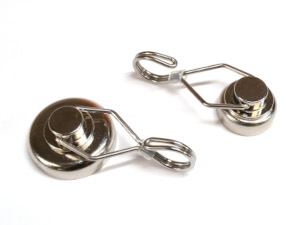 Rotating Swiveling Hook Magnets
Rotating Swiveling Hook MagnetsHang anything, anywhere with 360° of spin and 180° of swivel
Shop Now -
J-Hook Magnets - Magnetic hooks in a J-shape to allow easy hanging on walls and ceilings. They are best for situations where you need to remove items quickly or have something you cannot thread into an eye-hook.
-
Eye-Hook Magnets - Eye-hooks allow the same benefits as a j-hook magnet, but with the added benefit of a closed loop so the string, rope or object being hung will not fall out. They are also great for things like magnetic cable management as shown in our Top Ways to Get Organized with Magnets article.
-
Slotted Hole Hook Magnets - Our slotted hole magnetic hooks give you the freedom to use either the slot or hole to hang objects allowing for different hanging solutions not possible with normal hook magnets.
-
Plastic Coated Hook Magnets - A colorful way to hang lighter objects. Great for hanging objects on office walls, filing cabinets and more.
Our smallest hooks are great for hanging light objects. Want to hang an oven mitt on the side of your fridge? These are the ones you want.
They aren't rubber coated, but each one has two little rubber feet. These help provide that added bit of friction to prevent it from sliding down.
If you look closely, you'll even see that the magnet itself is actually a disc magnet set in a steel cup. This is a lot like our broad line of mounting magnets. This configuration is great for sticking to a steel surface without requiring an excessively thick magnet. It can also help get a bit more strength sticking to a thin steel surface.
-
Rubber Backed Rotating Hook Magnets - These hook magnets have a rubber surface to improve traction and a curved hook to lower leverage and are able to hang heavier objects.
This WPH-SM magnetic hook provides a strong hold with only a few, modestly sized magnets. A piece of MV43 viewing film reveals the hidden magnets inside.
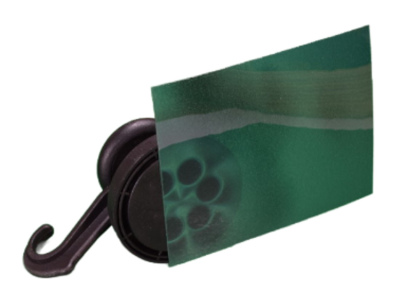
From the outside, this magnetic assembly is a stout plastic disc, with a rotating hook for hanging things on. There are a lot of really smart magnetic design choices embedded inside.
These hooks have an internal disc of steel, on which an array of disc magnets are arranged. With the whole thing covered in a grippy, rubber-like coating, they are great at providing that extra friction.
Another subtle feature is the hook itself. Notice how the hook curves very close to the wall you're sticking the magnet to. This helps reduce the leverage of a load trying to pry the magnet off. The closer the hook is to the wall, the less likely it is to pulled off the wall.
-
Custom Rubber Hook Mounting Magnets - As used in the above video, you can make your own custom hook magnets by using our rubber mounting magnets on each side of the glass. This prevents slipping and the rubber coating is made for outdoors. It also feature an open hole that allows for custom hardware for hooks; giving you more flexibility to hang in different ways.
Top overall pick for magnetic hooks
We have many colors, sizes and hook types in our magnetic hook lineup, but we chose our new rotating swivel hook magnets as the best all around hook magnet due to its versatility for use in almost any situation. The only downside is that it is not plastic coated and may rust if exposed to moisture.
- 360 degrees of freedom in rotation
- 180 degrees of pivot/swivel to allow hanging both on walls and ceiling or at any other angle
- Angled hook with rubber grip for stronger more compact magnet
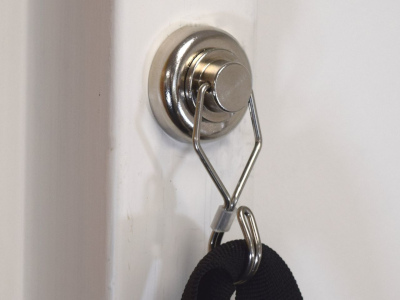
A well rounded magnetic hook that spins 360° and pivots 180°
Shop NowHook magnet alternatives
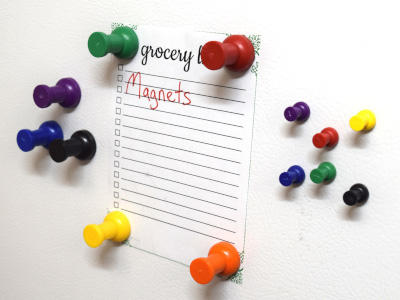
For some hanging projects, you don't need a hook. Our magnetic thumbtacks are very popular for hanging greeting cards and photos on a fridge door. The smaller size can handle most cards, while the larger one tackles very thick cards. Check out our Practical Uses of Magnetic Thumbtacks article to learn more about how to use magnetic thumbtacks or pushpins.
3. How strong are magnetic hooks?
In this section we focus on testing each of our hook magnets' strength to see how much they can hold up. First, it's important to understand that not all surfaces are the same and hanging on a wall vs. a ceiling is different as friction to prevent the magnet from sliding down is needed when hanging horizontally. The below picture illustrates that a pull test in an ideal situation is not necessarily the same as when hanging on a ceiling or wall.
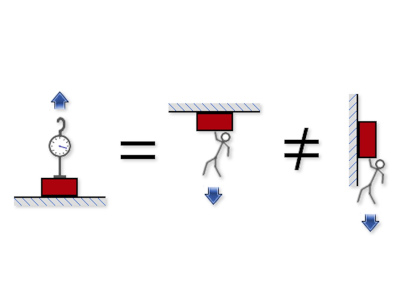
Test chart for hook strength vs. surface
We gathered these magnets and a few others to test them on a few common surfaces. Here's the table of data we measured:
| Hook Magnet Type | Door | Filing Cabinet | Refrigerator |
|---|---|---|---|
| MMS-E-X0 hook magnet | 5.2 lb | 3.6 lb | 3.6 lb |
| MMS-E-X4 hook magnet | 7.6 lb | 7.2 lb | 3.2 lb |
| MMS-E-X8 hook magnet | 14.8 lb | 11.4 lb | 5 lb |
| HOOK-BLU hook magnet | 2 lb | 5 lb | 2.6 lb |
| WPH-SM hook magnet | 11.2 lb | 9 lb | 8.6 lb |
| WPH-LG hook magnet | 12.4 lb | 10 lb | 11.4 lb |
| MM-F-12 | 2.2 lb | 1 lb | 1 lb |
| MM-F-16 hook magnet | 5.2 lb | 6.2 lb | 2 lb |
Varied testing results for hook strength
The whole reason we test all these magnets is to find some no-nonsense, straight answers to share. We hope our experience can help folks order the right magnets for the job. What holds true in one situation might not for another. It's not always obvious before you test it out.
For example, the MMS-E Mounting Magnets and the big hooks were all slightly stronger on the door, compared to the filing cabinet. The little hooks, however, were quite the opposite. They measured much stronger on the filing cabinet!
Why is this true? We suspect two factors are involved: steel thickness and paint thickness. The filing cabinet has a much smoother finish. Though we didn't measure it, we suspect the paint is thinner. This allows the magnet to be closer to the actual steel underneath the paint, which might make a bigger difference in performance with those little hooks. The other magnets were stronger on the door, maybe because that steel is thicker than the flimsy filing cabinet.
What conclusions should you take from all this? Use the numbers here as a starting point and test in your setup. When in doubt, order a few magnets to test before making larger orders.
Testing magnet strength on a window
Two RMB-B-X8 rubber block magnets attracting through a single pane of glass are able to hold up a light weight. That decoration us under 1 lb.
Can I use two magnets on either side of a window to hold something up? Most times, this isn't a great idea. Windows are commonly constructed as double-pane, meaning there are two layers of glass separated by a gap of a half an inch or more. With large gaps like this, smaller magnets just don't provide enough force.
We tested a pair of WPH-LG rubber hook magnets through a single pane of glass, and it was able to hold up some weight. We tested just over 6 lb on that particular glass. When we tested the same pair of magnets on a double-pane window, they could barely hold up themselves.
We also tested RMB-B-X8 rubber mounting magnet and RMB-B-Y0 rubber mounting magnet magnets on glass. They worked well on the single pane, testing at 4 and 9 lb, respectively. On our double-pane window, the X8 failed, while the Y0 could maybe hold up a piece of paper.
If you are trying to hang something on a thicker glass or a double-paned window, please consider something other than magnets. How about some tape? We're magnet people who look for any excuse to solve a problem with magnets. Keep that in mind when we say you shouldn't try using magnets through thick, double-paned windows.
Why isn't magnet pull force the same as listed on website?
While we didn't include it in the table of test data or the video, we also tested the three MMS-E open hook magnets mounting magnets with a straight pull. We measured how much force it takes to pull the magnet straight away from the door/cabinet, more like a Pull Force, Case 1 situation.
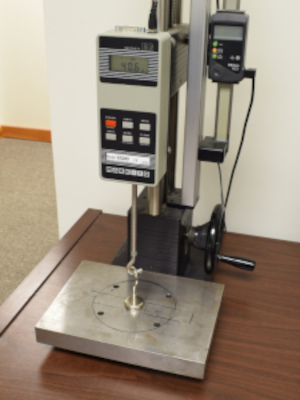
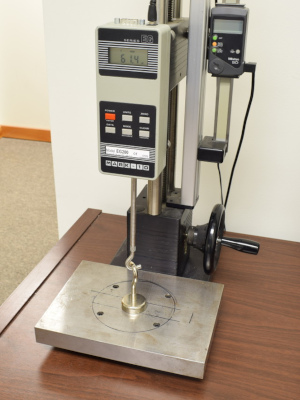
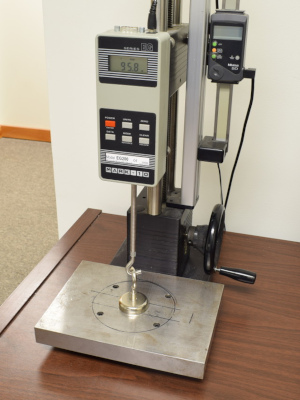
We measured pull forces lower than the numbers specified on the product pages. Why is that?
For example, the MMS-E-X0 j-hook mounting magnet tested at 10-12 lb on our test surfaces. Why is it listed at over 40 lb? The answer is simple: All of our Pull Force, Case 1 numbers assume you're sticking the magnet to a big, thick test plate. In that test, we measured much stronger pull forces. This can be confusing if you're expecting to see that same performance on thinner, painted steel.
Why don't we just list those products with pull forces to thinner steel? Why do we choose the thickest steel to make the spec? These are fair questions. In using the thickest steel, we're showing the magnet in it's strongest possible situation. It's what the magnet is capable of in ideal conditions.
Wouldn't it be better to choose some thinner, more common steel to define the spec? We don't think so. For starters, what's common? Many of us only stick magnets to refrigerators, but that doesn't mean that someone doesn't stick them to a hull of a ship! If we defined the test spec to a thin steel, magnetic strength would "level off" as you tested larger and larger magnets. You'd really be testing the capability of the steel more than the magnet!



